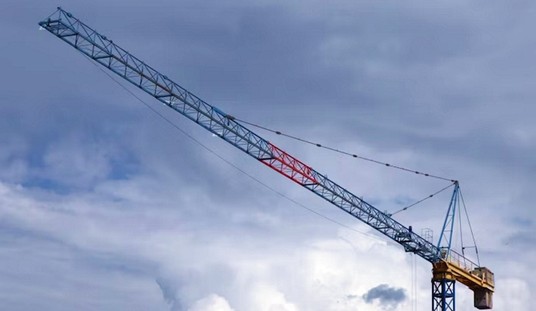Outrage ensued in the NFL world after Miami Dolphins quarterback Tua Tagovailoa suffered a gruesome and frankly scary injury Thursday night—just four days after he was apparently concussed in Sunday’s game against the Buffalo Bills. The question many are asking is: what was he doing on the field in the first place? What happened to all the ballyhooed NFL safety protocols that were put in place to protect players?
Warning: Graphic content follows:
The play in question occurred in the 2nd quarter of the Amazon Prime streamed game:
This is a disaster. Pray for Tua. Fire the medical staffs and coaches. I predicted this and I hate that I am right. Two concussions in 5 days can kill someone. This can end careers. How are we so stupid in 2022. pic.twitter.com/D8S8eEbgda
— Chris Nowinski, Ph.D. (@ChrisNowinski1) September 30, 2022
The third-year quarterback out of Alabama seemed to writhe in pain, and then his hands and fingers curled into unyielding claws. He lay on the field for approximately 10 minutes before he was carried away on a stretcher and taken to the University of Cincinnati Medical Center. Before we go any further, let me just say that our hearts go out to Tagovailoa, and we pray for his health regardless of whether or not he’s able to continue his football career.
You could just chalk this down to the dangerous nature of sports—it was just a freak hit, after all, and could have happened to anyone playing a violent sport. But here’s the problem: just days before Tua had been involved in another violent collision, after which he stumbled around, fell, and appeared seriously disoriented:
You hate to see this for Tua. He has shut up the haters with his play and was battling toe to toe with the vaunted Buffalo Bills and MVP favorite Josh Allen. Praying for his health and for a full recovery from this. pic.twitter.com/1OV8Sq8ocj
— Robert Griffin III (@RGIII) September 25, 2022
The team said that it was a “back injury,” although anyone watching would beg to differ. Back injuries don’t usually make one unbalanced and discombobulated as Tua certainly seemed to be in the video. Nevertheless, the NFL claimed that concussion protocols were followed diligently, and Tagovailoa came back to play the entire second half and then started Thursday night’s game.
Healthline contends that what happened to Tua’s hands Thursday could be indicative of a “fencing response”:
When a person experiences an impact that’s strong enough to cause traumatic brain injury (TBI), such as a concussion, their arms often go into an unnatural position. This position — forearms extended or flexed, usually in the air — follows the impact and is known as the fencing response position. It lasts up to several seconds after the collision.
Expressions of disbelief and outrage came in from across the spectrum, with sports pundits, the National Football League Players Association (NFLPA), and current and former players taking to the airwaves and social media to ask: what in God’s name was he doing out there? The NFLPA is launching an investigation:
The NFLPA is launching an investigation into how the Dolphins handled Tua Tagovailoa’s concussion check against the Bills, per @TomPelissero pic.twitter.com/rbSu7qaKWz
— Bleacher Report (@BleacherReport) September 25, 2022
It’s not as if this was unpredictable. Chris Nowinski, a co-founder of the Concussion Legacy Foundation whose tweet I used at the beginning of this article, tweeted before the game Thursday: “If Tua takes the field tonight, it’s a massive step back for concussion care in the NFL. If he has a 2nd concussion that destroys his season or career, everyone involved will be sued and should lose their jobs, coaches included. We all saw it, even they must know this isn’t right.”
That’s a serious injury . Tua shouldn’t have been out there with Sunday Thursday turn around. Sometimes players need protecting from themselves. Dolphins failed Tua
— shannon sharpe (@ShannonSharpe) September 30, 2022
The good news is that Tua has been released from the hospital and is back at home. ESPN reports:
Tagovailoa was in “good spirits” upon returning to his home in South Florida on Friday, a source told ESPN. Initial tests showed no structural damage, another source confirmed to ESPN, and Tagovailoa, who wore a neck brace as a precaution, will have an MRI.
Concussions and head injuries have become a serious problem for the NFL, and a 2015 Will Smith movie titled “Concussion” helped bring the vexing issue to national attention. The NFL Concussion Protocol was developed in 2011 and agreed upon by the union and the owners. That deal:
Required an evaluation for all players demonstrating gross motor instability (e.g., stumbling or falling to the ground when trying to stand) to determine the cause of the instability. If the team physician, in consultation with the sideline UNC, determines the instability to be neurologically caused, the player is designated a “No-Go” and may not return to play. [Emphasis mine.]
I can’t think of any better words—”gross motor instability (e.g., stumbling or falling to the ground when trying to stand)”—to describe Tua’s demeanor after the hit he took on Sunday. The concussion protocols are in place, but somehow they failed. Allowing him back onto the field for the second half could have led to second-impact syndrome, which means that he could have been additionally compromised well before yesterday’s game.
Multiple investigations are forthcoming, and hopefully, we can get an answer as to why the heck he was allowed to play Thursday. In the meantime, let’s hope Tua’s brain is OK. Recovery from TBI takes time, and it seems that’s the one thing that Tua Tagovailoa wasn’t given by his team.
NFL chief medical officer Allan Sills on @CNN, asked about Tua Tagovailoa's "fencing response" last night: "Well, of course I'm concerned. Just like you, as a neurosurgeon, anytime you see someone with a significant injury with neurologic signs, it's very concerning. …" (Cont.)
— Albert Breer (@AlbertBreer) September 30, 2022














Join the conversation as a VIP Member